——Laser welding is a laser beam fusion material with extremely high energy density. It has the advantages of fast welding speed, high strength, narrow welding seam, small heat-affected zone, small deformation of the workpiece, less follow-up processing workload, and high flexibility. Laser welding can not only weld common carbon steel and stainless steel, but also weld materials that are difficult to weld with traditional welding, such as structural steel, aluminum, copper and other metals, and can weld various forms of welds.
Modern sheet metal manufacturing has higher and higher requirements for quality of welding strength and appearance effects, especially components with high added value and extremely high welding quality requirements, which can be completed without subsequent processing or with minimal subsequent processing. However, traditional welding methods inevitably cause problems such as distortion and deformation of the workpiece due to the extreme heat input. In order to compensate for the problem of workpiece deformation, a large number of follow-up processing methods are required, thereby increasing costs.
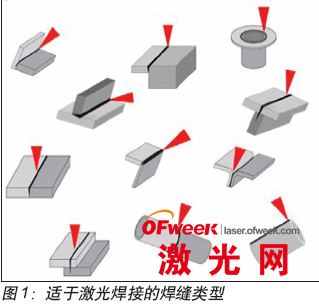
The laser welding has the smallest heat input and the heat-affected zone is extremely small, which can significantly improve the quality of the welding product while reducing the time for follow-up work. In addition, due to the fast welding speed and large welding aspect ratio, welding efficiency and stability can be greatly improved. Therefore, the application of laser welding in sheet metal manufacturing is becoming more and more common.
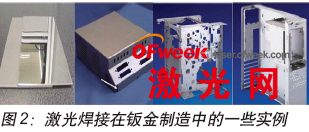
Laser welding: two tools in one
In modern sheet metal manufacturing, different products have different quality requirements for welding strength and appearance effects. For example, the appearance parts of elevators, kitchen utensils, and food equipment require very beautiful, smooth, and non-deformed welding effects. However, some internal structural parts or parts that need to be sprayed subsequently have higher requirements for welding strength and welding speed. This can precisely reflect the advantages of laser welding, because laser welding can not only achieve beautiful heat conduction welding of the weld seam, but also achieve high welding strength and high welding speed deep penetration welding.
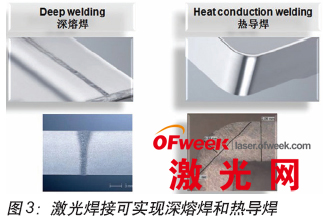
Heat conduction welding requires lower laser energy density and lower welding speed, but it can get a very beautiful welding surface effect. On the contrary, deep penetration welding requires a higher laser energy density, but can obtain a high welding strength and a higher welding speed.
Here we especially introduce TRUMPF's laser welding head that can realize deep penetration welding and thermal conduction welding. It can automatically switch between thermal conduction welding and deep penetration welding by adjusting the laser power density, so as to achieve the ideal appearance effect and welding strength. Not only can laser welding without welding wire be realized, but also the cold wire welding function can be used well. It is suitable for situations where the joint gap is too large or the metallographic structure of the welding area has special requirements.
Modern sheet metal production process
Since the heat input during laser welding is extremely low, the amount of deformation after welding is small, and a very beautiful welding surface effect can be obtained, there are few follow-up treatments for welding, which can greatly reduce or eliminate the labor in the huge polishing and leveling process. . This is of particular practical significance in today's rising labor costs. Laser welding is carried out in a closed safety shield, and is equipped with an automatic dust extraction device, which can ensure the health and safety of employees while maintaining a clean and tidy working environment in the workshop.
The typical modern sheet metal production process flow is shown in the figure below.
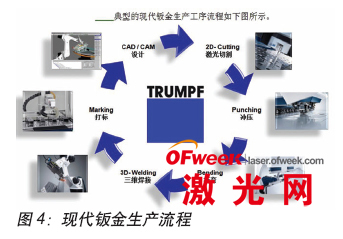
Optimize the sheet metal production process with a friendly design suitable for laser welding
Compared with traditional welding, laser welding has obvious advantages, but laser welding also has higher requirements on the front-end machining accuracy of the workpiece and fixtures. To maximize the advantages of laser welding, reduce production costs and provide production efficiency, it is necessary to optimize the entire sheet metal production process such as product design, laser cutting, stamping, bending and laser welding.
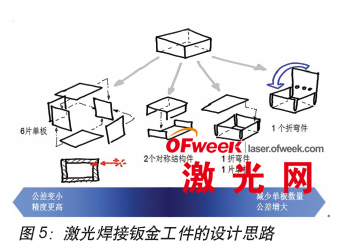
We found in actual production that the cost of sheet metal products using laser welding technology, the laser welding process is not the main determinant. Actual production experience proves that 70% of the cost of sheet metal products is determined by product design. To reduce production costs and improve welding efficiency, we must first start with product design. In the initial product design, considering the requirements of laser welding on the workpiece, for example, reducing the bending process in production, using laser cutting as much as possible, adopting self-positioning design, etc., will make laser welding procedures and fixtures very simple. To achieve the goal of reducing costs and improving efficiency.
Use the EasyJoin technology of TRUMPF punching machine before laser welding to punch out positioning holes/tooths at the joints of the plates. In this way, with the assistance of positioning holes/tooths during clamping, the welding fixture can be simple, and no traces are left after laser welding, so as to obtain high-quality welds.
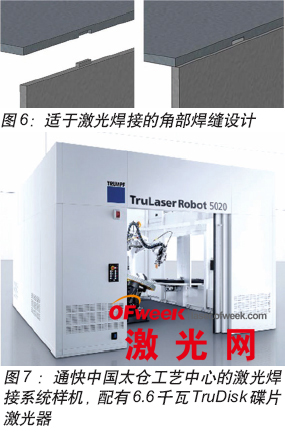
Optimization analysis of laser welding sheet metal products
Here is a practical case. This company needs to produce 1,000 such aluminum alloy products every year. After the traditional welding method is used for processing, a lot of polishing procedures are required. The cost of polishing each product is about 5 Euros.
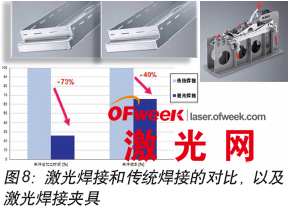
The use of laser welding technology increased the operating cost of laser equipment and fixtures by about 3,500 euros, but saved high polishing costs; the total processing time for each product was reduced by 73%, and the cost of a single product was reduced by 40%.
Considering that the investment of laser welding fixture and the preparation time (such as programming, welding process debugging) are one-off, it is more economical to use laser welding for larger batches of products.
Summarize
Laser welding has been used in sheet metal production for many years. With the continuous advancement of control technology and laser technology in recent years, the use of laser welding has become easier and easier to use. How to make use of the advantages of laser welding in sheet metal production requires an overall perspective to optimize the entire product manufacturing process. Adopting a friendly design suitable for laser welding will be the key to obtaining a beautiful welding surface, improving production efficiency and reducing production costs.















